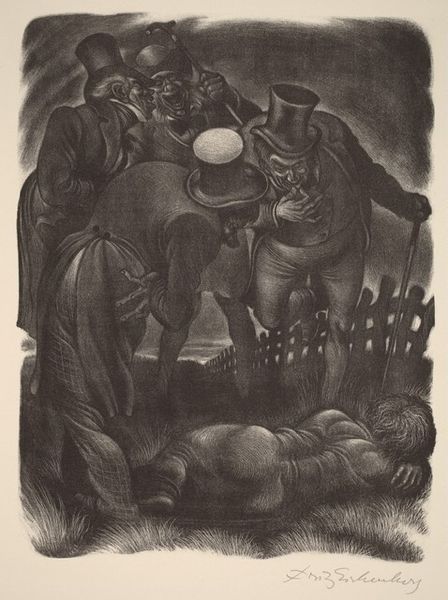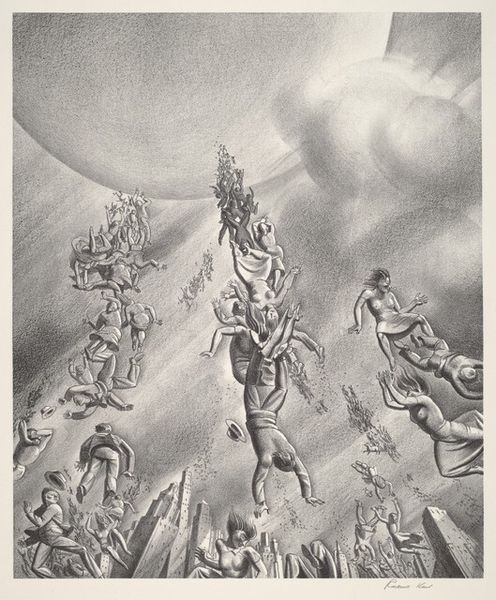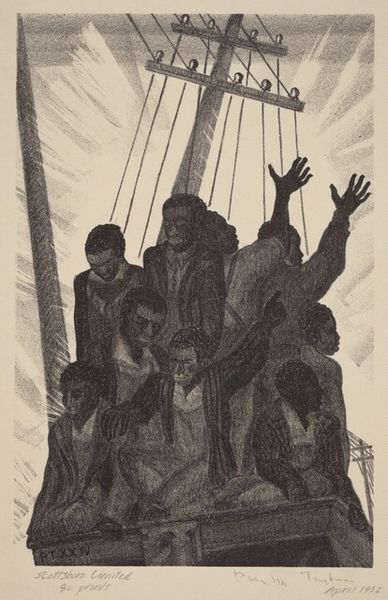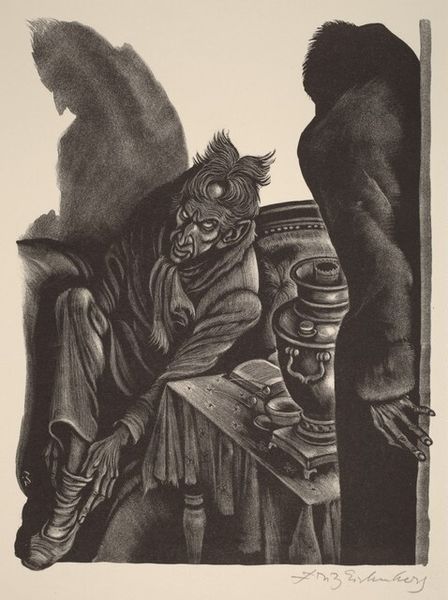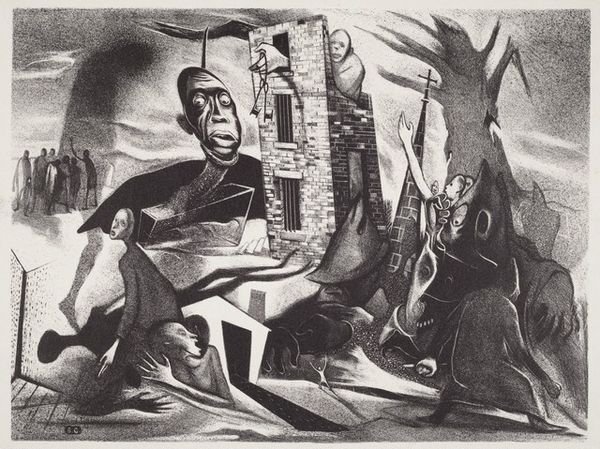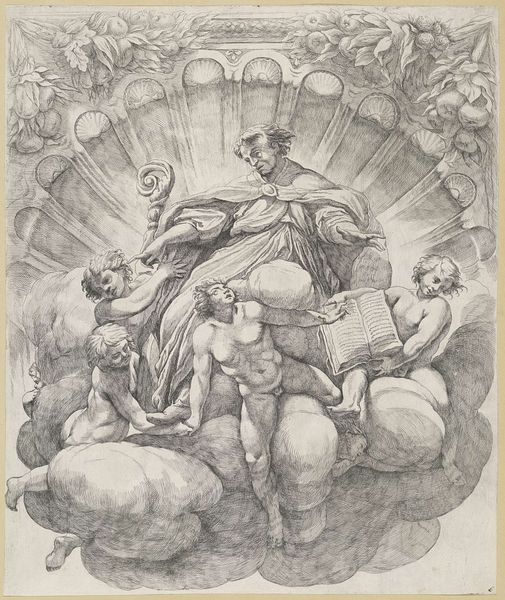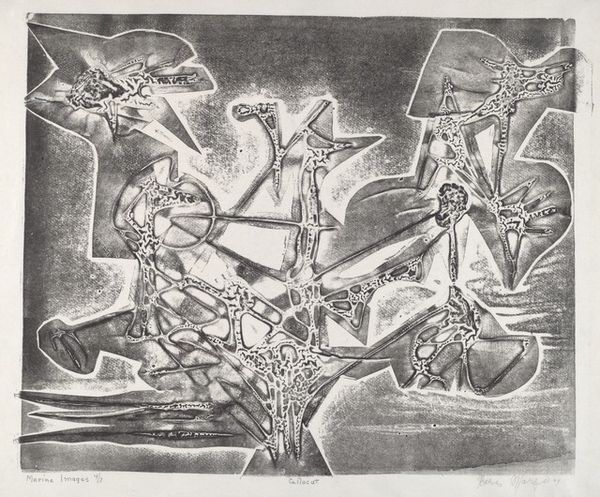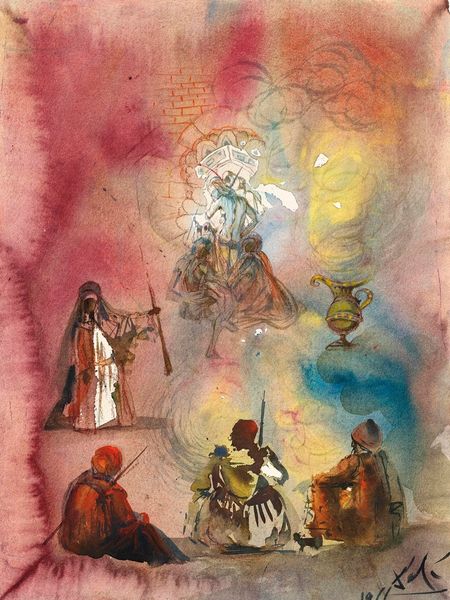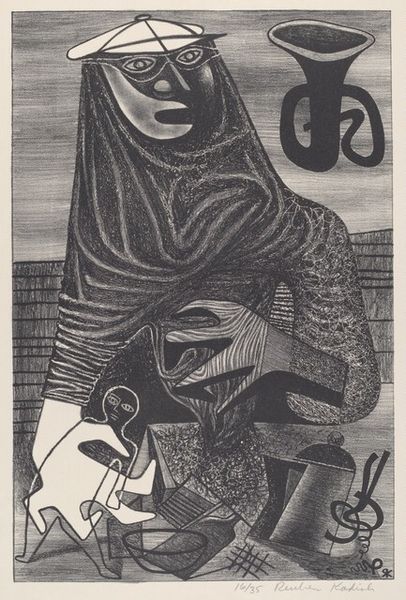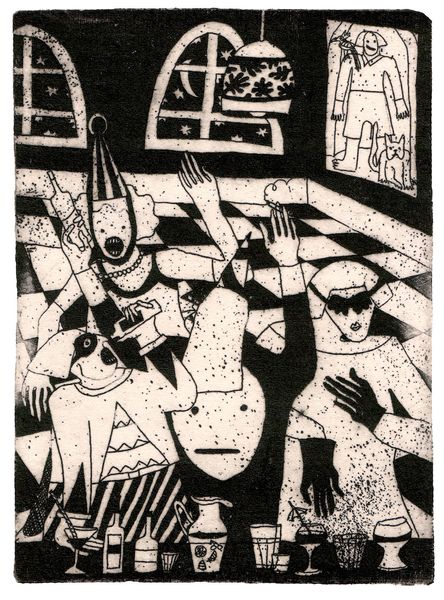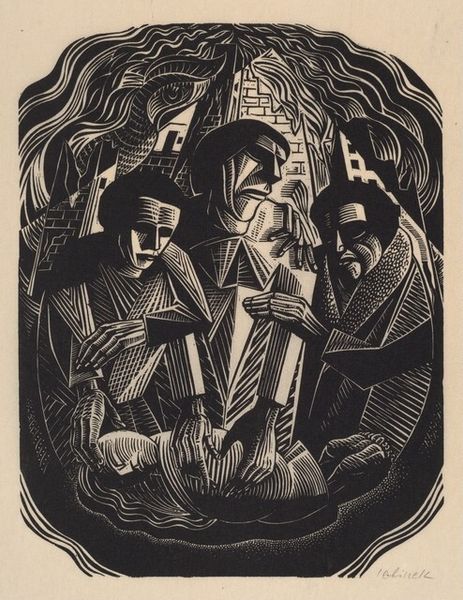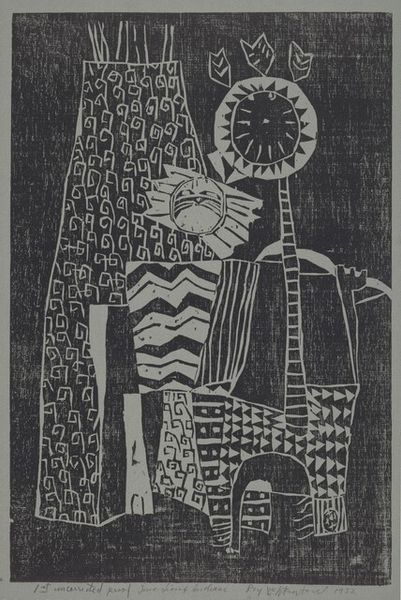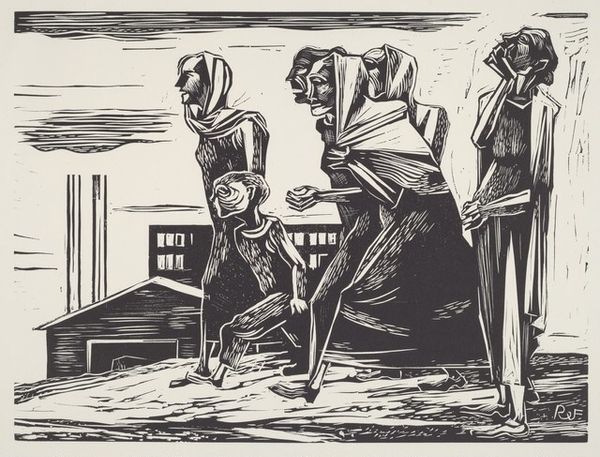
drawing, print, pencil
#
portrait
#
drawing
# print
#
caricature
#
figuration
#
pencil
#
mexican-muralism
#
portrait drawing
#
genre-painting
#
history-painting
#
realism
Dimensions: sheet: 321 x 238 mm
Copyright: National Gallery of Art: CC0 1.0
Editor: Here we have Philip Herschel Paradise’s print, “Mercado de Las Flores.” The grayscale and the depiction of everyday people reminds me of the documentary photography movement. What stands out to you? Curator: The texture and visible labor behind this print intrigues me. Notice the hatching and cross-hatching creating volume. This isn’t a seamless, mass-produced image, but something worked on, considered, handmade. Editor: It really does highlight the *making* of art, as opposed to the finished product! So, in your view, is the “craft” more important than its aesthetic value? Curator: It asks us to consider what constitutes "value," and where that resides. The artist's hand, their time and effort rendered visible, are just as crucial as the depiction of the women working in the flower market. Consider the paper, the ink – materials extracted, manufactured, transported. Editor: Oh, I never thought about it that way. Do you mean everything has a backstory about the product’s value and accessibility? Curator: Exactly! The context shapes how we understand what we're seeing. How did this artist have the resources to create, print, and circulate this image? What socioeconomic factors shaped this flower market itself, the clothing the workers wear? These questions open up the reading to the bigger picture. Editor: Thinking about the labor involved definitely gives me a deeper appreciation for not just the image, but everything that went into making it. Curator: Precisely. By foregrounding process and materials, "Mercado de las Flores" becomes a rich visual text loaded with implications about labor and class.
Comments
No comments
Be the first to comment and join the conversation on the ultimate creative platform.
